Media | Articles
Walt Disney’s last car reveals an unexpected part of his character
One bright and sunny day in Los Angeles, the world’s best-loved animator was walking along the street, side by side with the guy who would go on to drive Herbie. The pair passed a Mercedes dealership and there, parked right against the front window, was a cream-colored 1964 230SL. Eyebrows on that famous mustachioed face raised in interest, but then they sank again with slight disappointment, and on he walked.
Dean Jones, the actor who played driver Jim Douglas in The Love Bug and Herbie Goes To Monte Carlo, always told the story with a smile. “I can’t afford that,” the animator said, pragmatically, and he kept walking.
And then Walt Disney had a second thought. “Wait! I can afford it!” And back he ran, reaching for his checkbook.

Whether you are 80 or eight, it’s likely that the life’s work of Walt Disney has reached out to touch your life. Perhaps you are old enough to remember his Silly Symphonies or even the early appearance of Mickey Mouse. Maybe the Disney Plus app is frequently called upon by the younger members of your household. Maybe Herbie gave you Bugs on the brain and you now own a dozen Volkswagen project cars.
As a public figure, Disney was grandfatherly and wholesome. He was trusted by parents and kids alike. He’d come onscreen, introduce the movie, and we knew we were safe in his hands. He seemed an affable sort, but in real life he was a driven man. Founding the entertainment empire that now seems to own a piece of everything wasn’t easy. And, with one exception, Disney the man rarely splurged on himself.
Marketplace
Buy and sell classics with confidence
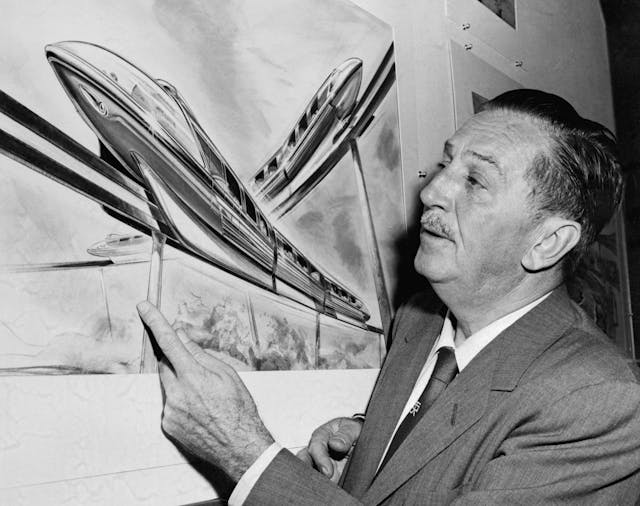
To get a glimpse of what life was like in the Disney household, let’s travel back to November 1928. Walt Disney Studios breakout hit, Steamboat Willie, was about to hit theaters, introducing the public to probably the most beloved mouse in the world.
The film would bring financial success, enough to kickstart Walt’s bigger ideas. However, at the time he was strapped for cash, needing to cover production costs and pay wages to his animators. So, he was forced to sell off his 1926 Moon Roadster, a middle-of-the-road six-cylinder car built in St. Louis, Missouri.
Disney had grown up in small-town Missouri, and it had left an indelible imprint on the boy. An idealized version of Main Street would be at the heart of his theme parks.
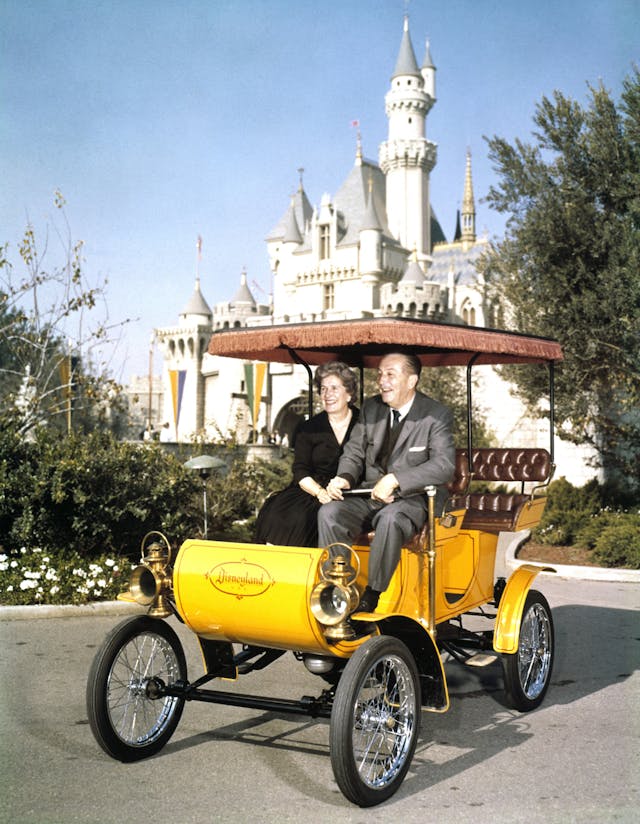
This sort of heartland down-to-earth spirit would long be part of Disney’s character. He moved to Hollywood in 1923, but he was always more of a Midwesterner than a showbusiness type.
To be sure, that image was carefully cultivated. He once said, “I’m not Walt Disney. I do a lot of things Walt Disney would not do. Walt Disney does not smoke. I smoke. Walt Disney does not drink. I drink.” But vices aside, the man seems to have been genuinely humble. Certainly his cars were.
Through the 1930s, Disney was a pitchman for DeSoto, with the tagline “America’s Smartest Low Price Car.” As payment for appearing in these ads, he got a free car—which he gave to his mother.
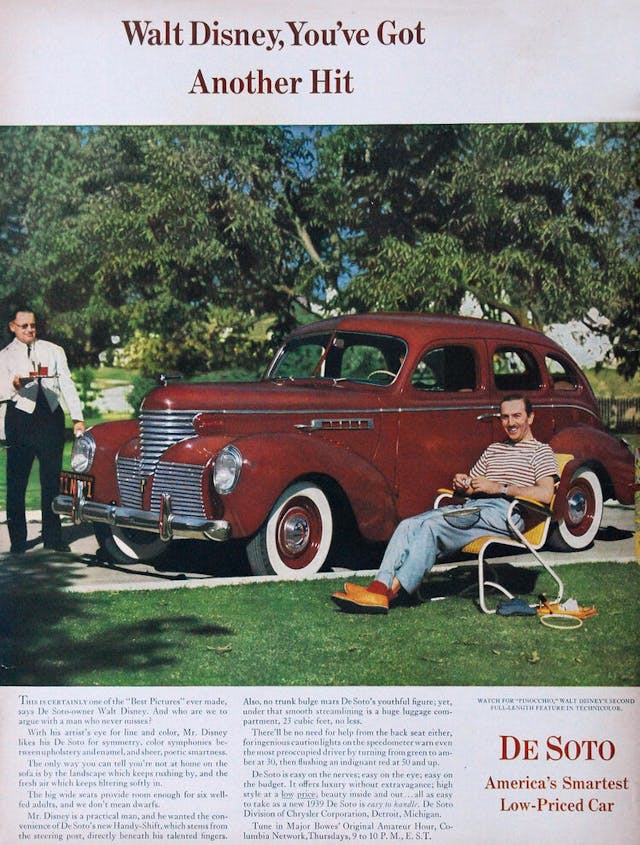
He didn’t buy a new car until 1942, despite the fact that, five years earlier, Snow White And The Seven Dwarfs had earned a staggering $1.5 million at the box office, which translates to $30+ million today. But having lived through lean times, Disney was cautious with his money. First he bought his wife a new car. Then he later got himself a Packard.
At a time when it was relatively common to only own a car for a few years and then change for a new model, Walt Disney seemed to hang on to his cars. Instead, he put his money back into his studio, and the eventual opening of Disneyland, in 1955. It is known that he favored a convertible, having owned a droptop 1948 Oldsmobile and later a 1958 Ford Thunderbird.
The Mercedes purchase was entirely out of character. Up to this point, the swishiest car Disney owned was probably that Thunderbird. In 1964, a new Ford T-Bird would have set you back about $4500 ($43,260 today). The 230SL cost him nearly twice that, at $8500 ($81,700). But you can see why Walt was bowled over.

The original SL, of course, needs no introduction—possibly the most graceful road car every produced in Germany. But Mercedes’ followup effort was no slouch. When it launched in 1963 as the 230SL, it was slightly more luxurious than its predecessor, but still very delicate.
Enthusiasts refer to this generation as the Pagoda SL, thanks to the looks of its curved-glass hardtop. The 230SL made Hagerty’s 2022 Bull Market List, being praised for its classic looks and the baked-in “motoring happiness” found behind the wheel.
What better reward for the man who built the “Happiest Place On Earth” than a gorgeous European roadster? But, true to form, Walt Disney seems to have been slightly embarrassed by his impulsive purchase. He drove the car, preferring it to any company limousine, but he also managed to find a way to rent it back to his company for the filming of That Darn Cat, for $100 a day. Jones, who starred in the film, noted that Disney seemed to be trying to find a way to make the extravagance have some practical use.

Sadly, if he regretted the purchase, he didn’t have long to live with those regrets. All that hidden smoking would catch up with Disney, and he was diagnosed with lung cancer late in 1966. By December of that year, he was dead, aged just 65.
It is to be hoped that the last car he bought, in that moment of rash impulse, brought him some happiness. The car remains in the Disney family, though held privately, not displayed in some museum.
For a public figure who was so private, so carefully cultivated in image, Walt Disney’s last car shows an unexpected part of his character. He worked hard all his life, was known to have high expectations of his staff, and he built a lasting legacy. But on that day in May 1964, he was just a boy from the Midwest, staring through the window and falling in love with something beautiful. And then discovering, to a blooming and bursting delight, that all those years of hard work meant something magical.
Yes, Walt Disney. You can afford it. After all you gave to us, you deserve some joy too.
Check out the Hagerty Media homepage so you don’t miss a single story, or better yet, bookmark us.
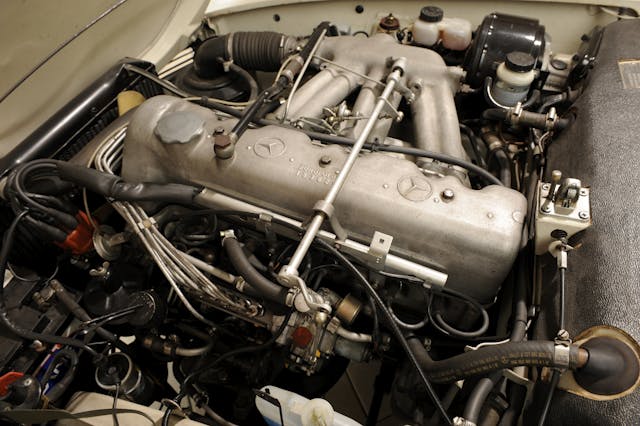

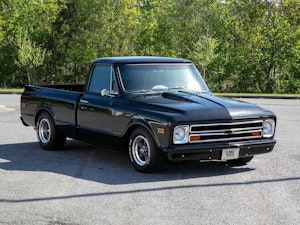


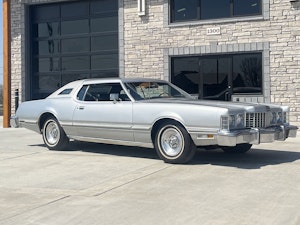









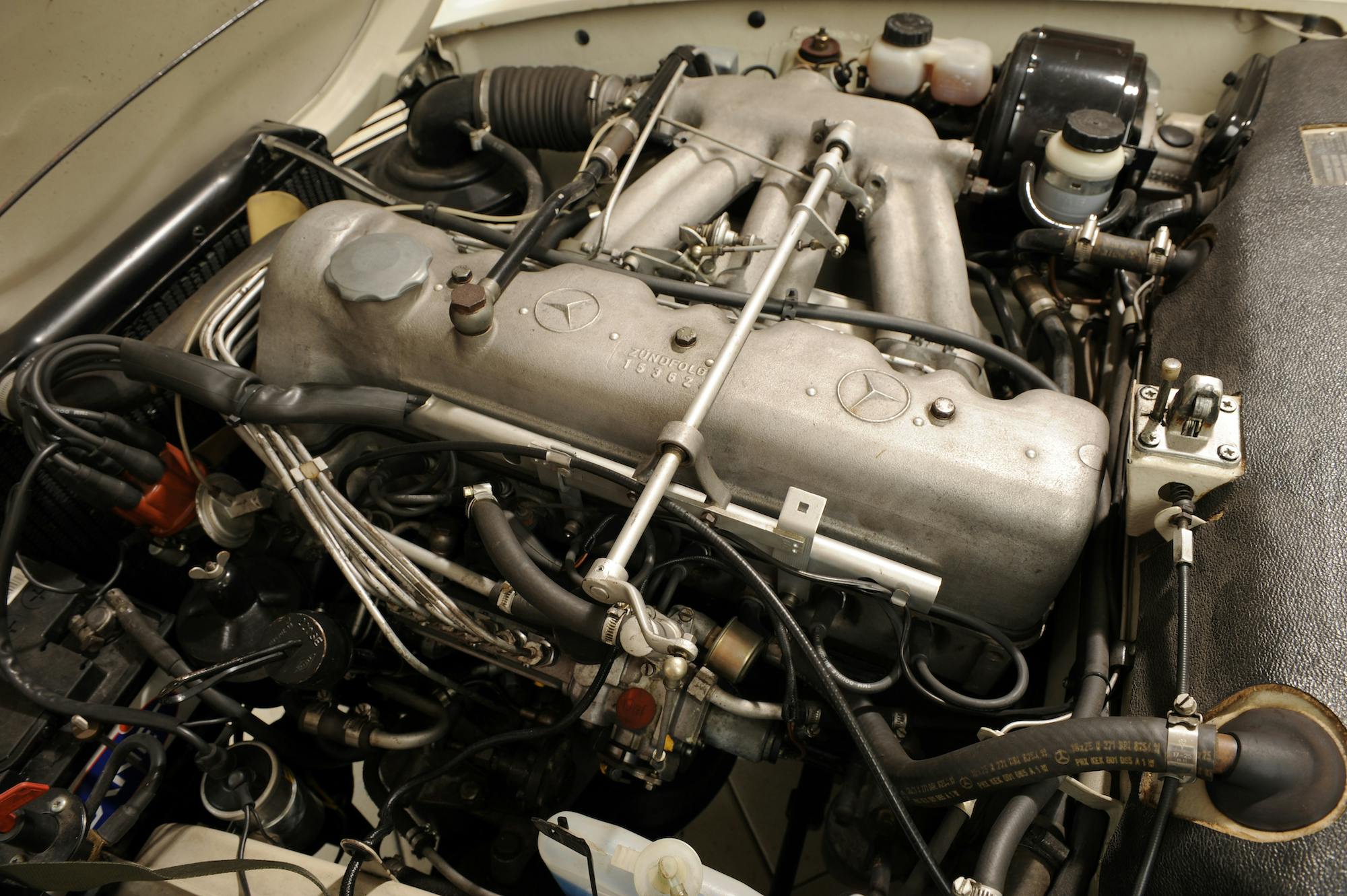
That Midwestern ethos is long gone at Disney. Sad.
The Disney character is long gone from Disney.
I don’t believe Mercedes Dealerships existed in April of 1964. I bet it was a Studebaker dealership. (And if he’d walked over to the Ford Dealership, he could have gotten a new Mustang – at a fraction of the price).
Max Hoffman was importing Mercedes Benz cars in the earky ’50’s
THANKS FOR SETTING US STRAIGHT NO ONE KNOWS EVERYTHING
THANK GOD FOR FOLKS LIKE MAX
This explains why a relative of mine bought a Mercedes in the 1960’s from a general dealership and not a “Mercedes” dealership.